OUR WOMEN IN MARITIME



















Dear Team,
As we navigate through 2024, I would like to take this opportunity to celebrate and acknowledge the remarkable contributions of women in maritime. Although maritime has historically been a male-dominated industry, we are proud to see more women breaking barriers and making their mark on our company and industry. This issue highlights eight remarkable women from Wilhelmsen Ship Management and their inspirational quotes. Their dedication, skills, and perspectives are invaluable, and we are committed to building an inclusive environment where everyone can thrive.
Our commitment to diversity goes hand-in-hand with our dedication to safety. In maritime, safety isn’t just a priority; it’s a culture. Every day, each of us plays a critical role in ensuring that our operations are safe, efficient, and compliant with the highest standards. Safety is at the core of everything we do, from our vessels’ maintenance to our crew members’ wellbeing. I urge everyone to continue being vigilant, proactive, and supportive of our safety protocols, as they are the foundation of our success and sustainability.
On the topic of sustainability, I am happy to share that our Sustainability Report for 2023 is now available. This report is not just a document; it describes our ongoing efforts to reduce our environmental footprint, enhance our operational efficiency, and make a positive impact on the communities we serve. I urge each of you to delve into the report, as it’s a reflection of our commitment to responsible and ethical practices in all aspects of our operations, particularly safety.
At the core of our company’s strength is our people. We believe attracting and retaining top talent is the key to maintaining our competitive edge. Our commitment to continuous learning, professional growth, and career
advancement ensures that our team members are not just equipped with the necessary skills but also inspired and motivated to unleash their full potential.
Our success is a collective effort, and we continue to achieve our goals through our shared dedication and hard work.
I’m grateful for your continued commitment and contributions. Let’s keep striving for excellence, embracing safety, and celebrating the diversity that strengthens our company.

With regards,
Carl Schou, CEO & President of Wilhelmsen Ship Management

The dedication, resilience, and passion of the women we feature inspire us all. To the young girls who dream of a career at sea, we say: the waves await you. We hope the quotes from these incredible women will inspire you to chart your course
The biggest hurdle was making the big step from junior officer to chief officer. Every job on board is different, challenging and a neverending dynamic process. I hope my journey will inspire other women to overcome odds and embrace their full potential.

- Captain Rosemelyn De Villa Boongaling
We are focused on increasing the intake of female cadets
with courage, embrace the challenges, and know you have a place at the helm. Together, we can navigate a brighter future for the maritime industry, where talent and passion determine success, not gender.
Ifeel very lucky to be in Wilhelmsen, I have a very interesting job, interacting with a lot of industry players every day and feel useful for the fleet operations. I am ambitious, and I hope to grow from this role! At the same time, I’d be honoured if I could inspire younger girls to be a bit more daring in life.

As one of the few female captains in Korea and the first in Wilhelmsen, I hope my achievement can inspire more female seafarers to break the glass ceiling and younger generations to consider seafaring as a career.

“
- Michela Sasdelli, Vessel Service Manager
T“
- Captain Lee Eun Ran
he most vital support to encourage women in seafaring is to ensure equal treatment. This entails providing them with equal opportunities and eliminating any gender bias. Acknowledging the contributions of female seafarers will further inspire more women to pursue rewarding careers at sea.

I ’m grateful to Wilhelmsen Ship Management for giving me this opportunity to enhance my career growth. I’m happy to see more women pursuing a career at sea with ambition and courage. Let’s join hands and create a world where everyone thrives regardless of gender difference.
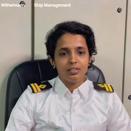
“
- Lee Ji Hye, Crewing Manager
Women in the maritime industry, work hard, speak up and share your ideas. Our diverse perspectives are important to steer us towards the future of a better working environment within the industry.
- Ashwani HK, 3rd Enginner

e want to show that we can do the job. We want everyone to see us as fellow colleagues who can carry our own weight. At the end of the day, we are just as qualified.
“

- Raquel Marilag, 4th Engineer
- Christina Cheh, Vice President - Global HSEQ and Systems
eafaring is a tough job for both men and women. But if you know what you want, then go ahead and do it! This line of work requires people with a strong will and a lot of patience!

- Sabrina McCoy Villaruz, 3rd Officer
This interview with Ms. Christina Cheh, our Vice President, Health, Safety, Environment and Quality, was originally published on SeaVoices on 24th May 2024
When Christina sailed as a cadet, she wrote letters home to stay in touch. It took a while for the much-awaited replies
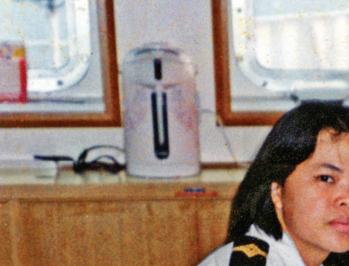
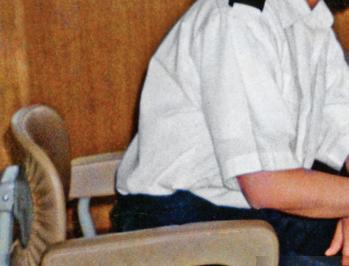
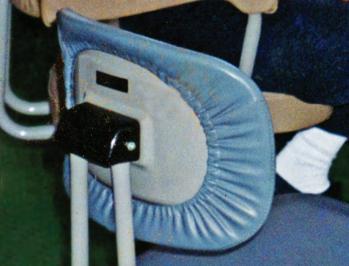
to arrive through the postal system. She has witnessed the evolution of the maritime industry over the years, while working her way up to Chief Officer and later, progressing through safety and operations roles at Wilhelmsen Ship Management. SeaVoices speaks with her on her current role helping ship owners run their vessels safely.


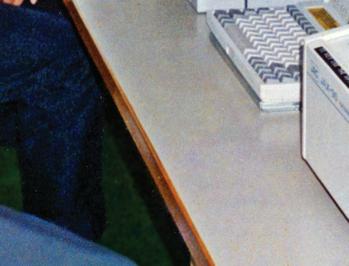
What are some key developments in shipping and their implications on safety?
Christina:
Vessels are getting more efficient and navigation technology more advanced. These translate into shorter voyages. For our seafarers, there’s a lot of pressure to complete the required tasks within a shorter time frame. In the rush, there is more room for certain safety protocols to be overlooked.
The systems onboard have become more complex. The implementation of decarbonisation technologies, such as scrubbers, exhaust gas cleaning systems, or ballast

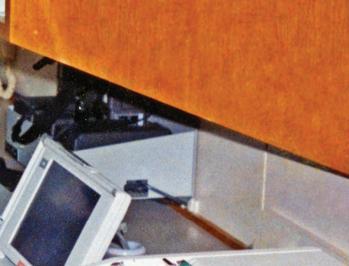


water treatment systems and complying with emissions regulations means more is required of seafarers. The same skillset that had kept them safe and effective are no longer adequate and will need to be enhanced.
Communication technology such as WIFI is a double-edged sword. It provides comfort and joy for seafarers. Thanks to WIFI, the gap between sea and shore is reduced almost instantaneously. But personal mobiles can be a source of distraction and danger if not managed adequately.
Question:
How can shipping companies implement a safety programme that is relevant to the times?
Christina:
The starting point is a Safety Management System (SMS). We help our clients establish one that encompasses key aspects of their ship and shore operations. The purpose of the SMS is to guide leaders and staff in undertaking risk identification, assessment and mitigation. It spells out the procedures for safe navigation, emergency preparedness, pollution prevention and seafarer training.
The regulatory landscape is dynamic. We monitor closely the developments taking place. We collaborate with classification societies, regulatory bodies, and industry partners to stay informed of the requirements and best practices. We attend training programmes which provide opportunities for professional exchanges with our industry counterparts and beyond. By upgrading and updating our knowledge, we can value-add to our clients’ business.
Question:
What are the challenges you face in your work?
Christina:
Getting buy-in from all levels of staff to make safety a top priority. Top management is concerned about good safety records as well as costs. Supervisors and the rank-and-file are focused on the increased workload and the need for documentation and audits.
The SMS is getting thicker with time. I’ve been asked this question quite often: “Will doing all of these contribute to a safer workplace?” Unfortunately, I don’t have the answer. But I think we have to watch out for the tipping point when regulations cease to be effective as a result of fatigue and apathy. The industry must take note. We can be the eyes and ears to gather sentiments and feedback for regulators to consider when they enact new laws.
Question:
What can shipping companies do to build a safety culture?
Christina:
It’s important to get people involved. Give them a sense of ownership so it’s visible that “safety is everyone’s business”. Promote behaviour or mindset through campaigns, slogans and mottos. This strengthens the team or company’s identity. Its members would be proud to say, “this is what we do here”. Involve senior leaders whose endorsement of the safety agenda is very important. We must be creative in our methods. This is a battle for hearts and minds, to win people over to a cause.
Our CEO sends messages to ships. One spokesperson is not enough – we have a safety mascot, Wilma. Its attributes are immediately relatable – an aquatic animal (octopus) with many arms symbolising the multitasking workforce. We use it to communicate to officers and seafarers the importance of putting safety first, ahead of the many things they juggle. We organise hazard hunts, a very popular activity, and give prizes for some of the best submissions. This is a good way to involve people in playing a part for safety, while having fun in the process.
In our experience, staff retention is beneficial towards sustaining safety culture. Staff who have been in the company longer can guide the newcomers. They contribute very useful insights especially when it comes to planning drills.


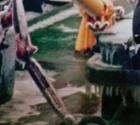



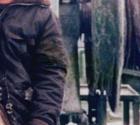

Question:


With her work experience, Christina is able to understand safety requirements across the board

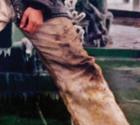

What are some of the attitudes or behaviours that are helpful for advancing safety?
Christina:
Cliched though it may sound, prevention is better than cure. Accidents are costly and losses of lives and limbs are irreversible. We would want to avoid them as best we can. The identification and removal of hazards is proactive compared with the attitude “if it ain’t broken, don’t fix it”. Staff should not be reprimanded for reporting near misses they encounter, or for speaking up about unsafe conditions such as breaches in the administration of hours of work and rest.
Complacency is an enemy. Danger strikes when you let off your guard. If you plan to enter the cargo hold without your PPE (personal protective equipment) this time because there had been no untoward incidents hitherto, think again. Whether it’s PPE or safety belts in cars, the risk of omission is just not worth taking.
The most impactful of behaviours is done voluntarily when no one is looking. When seafarers go on shore leave, we send them safety tips and good practices. If they do their part in internalising the discipline and responsible behaviours, their well-being is protected wherever they go. When the time comes for the next assignment, it’s easier to rejoin and settle in.
Question:
Thank you, Christina, for your time and expertise. Anything you would like to say to our readers?
Christina:
Trust the safety management system in your company. Work with it. Give feedback on what can be done better. Let’s improve together!
In our 2023 sustainability report, we proudly highlight the strides we’ve made in key areas that matter to our people. We have exceeded all our safety KPIs demonstrating our dedication to creating an engaging and safe workplace with no harm to people. We continue to make progress to create a culture where each employee is valued for their contribution.
Our environmental initiatives have also seen substantial progress. We have established and are actively implementing concrete actions aimed at achieving our net zero emissions vision. This commitment spans across our customer operations, our own operational activities, and our entire value chain.
Central to our values is our dedication to responsible business practices. This involves nurturing a robust
AMBIT IONS
Health and safety
Have an engaging and safe workplace with no harm to people
Equity and diversity
Have a culture where each employee is valued for their contribution
Human Rights and Value Chain Management
Have responsible supply chain partners
20 23 STRATEGIC TARGETS
internal boards by 2030
AMBIT I ONS
Decarbonization and green growth
Shape the maritime industry’s transition towards net zero emissions and capitalize on green growth
20 23 STRATEG IC TARGETS
Net-zero emissions before:
organizational culture and developing the competencies of our workforce. We believe that empowering our people with the right tools, knowledge, and framework is essential. It ensures that they can make the right decisions and uphold our values, even when faced with challenging situations. Our goal is to build an organization where doing the right thing is a natural response, driven by a deep-seated commitment to integrity and excellence.
Just as fingerprints are unique and essential to our identity, so too are the individual contributions of each member of our organization. Our collective efforts in safety, emissions, and ethical practices set the stage for a better tomorrow. Together, our unique fingerprints weave a tapestry of excellence, integrity, and resilience, making a meaningful impact on our industry and the world.





AMB I TI ONS
Compliance
Be a responsible, trusted and compliant value chain partner
202 3 STRATEG IC TARGETS
business conduct training

47% females in leadership positions
26 nationalities onshore
Engagement survey score: 7.7
Fair, equal and inclusiveness perception score: 7.9
Average registered training hours per employee: 11.69
Number of suppliers screened with ESG criteria: 834
Onshore LTIF: 0.16
Onshore sickness absence percentage: 1.51%
Onshore Occupational Disease Rate: 0
Onshore TRCF: 0.31
Onboard LTIF: 0.35
Onboard sickness absence percentage: 0.02%
Onboard Occupational Disease Rate: 0
Onboard TRCF: 2.27



Scope 1 emissions: 7 tCO2e
Scope 2 emissions (market based): 280 tCO2e
Scope 2 emissions (location based): 281 tCO2e
Scope 3 emissions: 27,935 tCO2e
Percentage completion rate for Wilhelmsen Code of Conduct training: 100%
Percentage completion rate for Cyber Policy training: 100%












This article was originally published in the Forbes Magazine in June 2024
ETS implementation in European ports and crew shortages are the big challenges for shipping, according to our CEO & President Carl Schou, in his exclusive interview with Forbes.
There has been a lot of discussion about it in previous years. The final version of the rules was only amended at theendof2023.

Over the past 14 years as CEO & President, Carl Schou has doubled the fleet of ships in management through organic growth.

“Greece is a huge market and, at the same time, quite a difficult one. We know that the backbone of the Greek shipping market is the smaller shipowners. When I was working in a small shipping company before I came to Wilhelmsen, I saw how difficult it was to stay on top, know all the regulations for every part of the globe, and answer the question of how to comply with them. So, we reached out to these companies in Greece, who are perhaps more traditional in how they are run, to share knowledge and skills. Therefore, we have a joint venture with Diana here in Piraeus.” The company has recently focused on adding newpeopletotheshippingindustryandretainingthem.
Carl shared with Forbes that “The biggest change in the shipping industry has to manage is the implementation of the ETS in Europe. EU ETS came into forceat the beginning of the year.
We have established a joint venture with Affinity shipping, Hecla Emissions Management to provide end-toend management services assisting clients with the establishment of a compliant framework for the EU ETS. We offer all our customers and our external customers aone-stopshopsothattheycansignupforthe service and then monitor emissions, buy, sell, and carbon allowances,”hesaid.
“By 2026, there will be a shortfall of about 90,000 seafarers.That’s why the partnership with the Chinese company Huayang Maritime Center has come up so that we have access to a larger number of seafarers. At thesametime,wewill expand our presence in and outside of China. The next directionoffocusisAfrica.
Last year, we evaluated diff erent companies and African countries, such as Ghana, Ethiopia, Kenya, and South Africa. These countries don’t have many maritime academies, but they do have academies. And these countries are also on the IMO white list. We are lookingatsettingupinoneofthesecountries.”
Wilhelmsen Ship Management is among the top 10 shipping companies in the world. The Norwegian ship manager specializes in gas ship management, now manages over 45 gas carriers including 7 FSRUs and 5 LNG Bunkering Vessels. It recently added 2 VLECs to its fleet. The discussion with Carl Schou, who is a frequent visitor to Piraeus, is therefore of great interest, especially at a time when the company has completed the acquisition of Zeaborn, expanding the fl eet to 450 vessels and signed a ΜΟU with China’s HuayangMaritimeCentre.
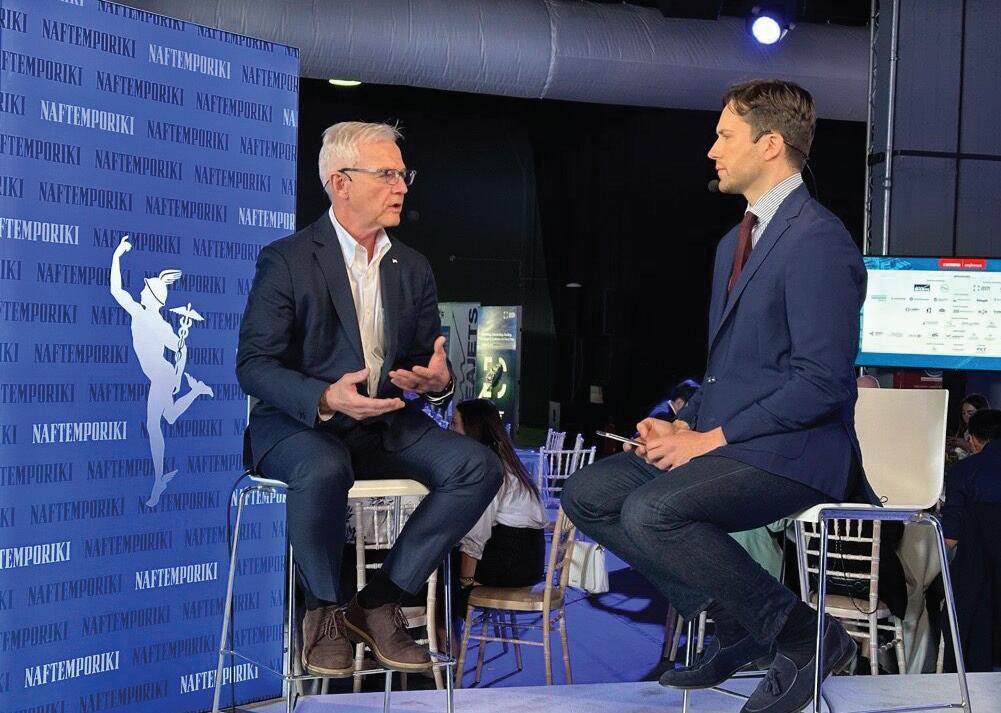
In an exclusive interview with Η ΝΑΥΤΕΜΠΟΡΙΚΗ | NAFTEMPORIKI, Carl shared about the company pillars that has contributed to the sustained success in the maritime industry. Speaking with Pavlos Pantazopoulos, Carl delved into the company’s stable ownership from the Wilhelmsen group family, conducive culture and values which sets the foundationofgrowthfortheshipmanager.
He highlighted key milestones and achievements, underscoring our long-term strategy and commitment to transparency. Carl also discussed about the strategic partnership with HuayangMaritime Center is a significant step that marks our entry in Chinese market which will furtherfuelgrowthplansahead.
Addressing environmental concerns, he emphasized the importance of Hecla Emissions Management in assisting owners in achieving compliance to EU ETSregulations andupcoming environmental regulations.

Carl shared insights on attracting talent amidst a global crewshortage and how geopolitical issues influence the younger generation’s career choices in seafaring. He stressed the need for inclusivity and diversity within the industry.
Carl also discussed our investments in technology, particularly in data analytics, to enhance decisionmakingand crew safety. In conclusion, he shared his economic outlook and expressed confidence in our preparedness tonavigatefuturechallenges.

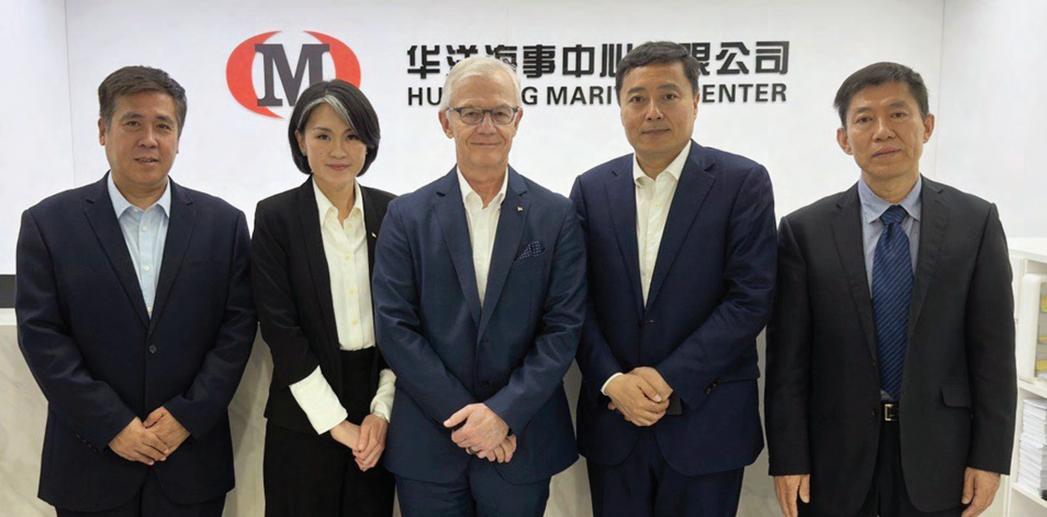
Wilhelmsen Ship Management and Huayang Maritime Center to strengthen collaboration in Chinese market
The two parties have signed a Memorandum of Understanding (MOU) to provide first-class ship-management servicestoChineseownersinthetanker,carcarrierandpassenger-shipsegments.
We have signed a Memorandum of Understanding (MoU) with Huayang Maritime Center (HMC) to provide ship management services to Chinese owners in the mentioned segment.
Since 1997, HMC has maintained a successful joint venture with Wilhelmsen Port Services, one of the entities in the Wilhelmsen Group through Wilhelmsen Huayang Port Services (Shanghai) Co Ltd. This long-standing and successful partnership sets the precedence for a strong foundation in collaboration within the ship management sector.
The latest co-operation will focus on various strategic prioritiesincluding,intheshortterm,facilitatingthetransfer of knowledge and expertise from WSM to HMC’s seafarers and shore personnel to operate vessels brought into management resulting from the collaboration of both parties. Longer-term plans include the potential creation of a joint venture to deliver high-quality ship management solutions for the mentioned segment to the Chinese market
WSM will also leverage its global network to support HMC’s procurement needs, including assisting HMC in sourcing andprovidingsupportinEuropean/USwatersifrequired.
HMC will use its local expertise to support WSM-managed ships in Chinese ports, while helping WSM with support arrangements in Chinese ports/waters. In addition, both companies will jointly promote pre-Port State Control (PSC) inspection services to enhance ship safety and compliance forcustomers.
About Huayang Maritime Center
Beijing-headquarteredHuayangMaritimeCenter(HMC)was established in 1995, and now is part of China Waterborne TransportResearchInstitute,whichisunderMOT. Huayang integrated shipping operation, ship management, ship agency, crew manning, maritime training and has become the leading ship manager in domestic ship management industry,alsothemostpreferredpartneroffinancialleasing companies.
Huayang now has over 150 vessels under management including bulk and general cargo carriers, oil tankers, chemical tankers, research ships, offshore vessels etc. As the biggest crew manning agency in China, Huayang provides crew manning service to 150 ship owners in the world and over 10,000 crew serving on board at all times. Focusing on green and intelligent shipping, Huayang is activelyengagedintheresearchandimplementofmaritime technologies such as marine weather routing service, marinerobotsandcleanfuels.

This article was extracted from the one originally published in Riviera on the 15th of Feb 2024.
Ship management companies spend a great deal of time educating staff on safety with the best tools and procedures available, but ultimately, personal safety is a personal responsibility
It is the seafarers’ attitude towards safety that is paramount to the safety culture on board. Having the right attitude towards safety can contribute positively to the safety culture on board by helping to ensure individuals avoid taking actions that may harm themselves or others. It will also increase the likelihood of seafarers speaking up if an unsafe action is occurring.
It is important to acknowledge that each seafarer is unique, each with different risk-taking behaviours. Recruiting seafarers with the right workplace safety profile is critical to the performance of the team on board, which determines the vessel’s performance.

Mr Carl Schou understands the need to harness data to protect the safety of our crew
We have performed a great deal of research into seafarers’ attitudes to risk and discovered a correlation between age and safety attitudes in its seafarers.
“In today’s world,” says our CEO and President Carl Schou, “we are surrounded by data. When we use it the right way, it can generate insights that can enhance operations greatly.”
He explains, “We have used data from HSEQ and crewing to analyse the relationship between the length of service with the company and the incident rates. Our HSEQ team has examined data points from incidents involving our fleet over seven years, as well as the crew profiles of the top four officers on board our fleet at the time of these incidents.”
He adds, “We have identified a strong correlation between these data points, suggesting that familiarity with our safety management systems is linked to a more proactive and positive safety culture among our seafarers. With this insight, we are now developing predictive models that leverage this data to increase our ability to manage risks proactively.”
The key is how we use this data to increase safety awareness among seafarers. Mr Schou explains that we use a predictive model, with which it has derived an ideal profile mix of seafarers that has the lowest risk rating. This profile mix is recommended when structuring the crew complement matrix for our fleet.
Underlying the effort to improve safety requires onboard co-operation and an individual’s attitude towards safety. Mr Schou notes there is a huge difference when you have leadership on board who has positive personal attitudes towards safety. “When leadership on board has a positive personal attitude towards safety,” he says, “they trust the systems, policies and processes are effective and will ensure compliance. They will not take shortcuts or reckless decisions when it comes to safety.”
He notes that it starts with recruitment. “We have implemented a rigorous recruitment process which includes safety profile assessments such as psychometric testing during seafarer interviews. These assessments are pivotal in ensuring we select the right candidates to manage our vessels.”
This is followed by specific strategies we have implemented to develop a strong safety culture among newly recruited officers. “We maintain an ideal ratio of newly recruited officers versus experienced officers,” says Mr Schou. “This variation differs by vessel types and positions. For example, if we have a newly recruited chief engineer, we will balance this up with a suitably experienced master on board.”
Our seafarers can also directly email to me for any concerns they have about safety
What do we do if we take over a new vessel? In these cases, we will send a safety superintendent on board to ensure familiarisation with the company safety management system and to cultivate a strong safety culture on board.
A robust safety culture plays an essential role in moderating risk-taking behaviours, discouraging shortcuts in safety protocols, and boosting seafarer morale, notes Mr Schou. “To strengthen our safety culture, we have done a safety survey to proactively identify gaps in safety and have taken a methodological approach to address it.”
This is backed up by communication between employees on shore and seafarers on board. “Newly recruited officers will be requested to spend a few days of familiarisation with relevant shore employees in our management offices before being deployed on board,” says Mr Schou.
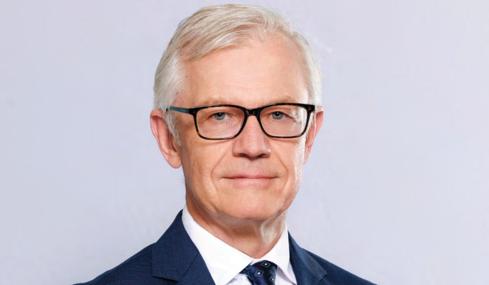
Mr Carl Schou can be directly contacted for safety issues
This is to ensure the seafarers are fully immersed in the system, policies and procedures and at the same, has time to build rapport with shore employees.
We also support and encourage our seafarers to speak up about unsafe behaviours on board. Mr Schou says, “We have implemented the concept of Just Culture which emphasises the importance of creating a workplace built on trust and responsible behaviour.”
The Just Culture approach aims to ensure seafarers feel safe to share information without fear, acknowledging human errors happen but should be managed in a way that promotes learning and improvement.
The company has open policies for whistleblowers and investigations will take place for each whistle. “Our seafarers can also directly email to me for any concerns they have about safety,” says Mr Schou.
The role of vessel managers and HSEQ is vital in promoting positive safety attitudes among seafarers at Wilhelmsen, notes Mr Schou. “Our vessel managers visit their managed vessels several times a year to strengthen the ship-shore connection through face-to-face meetings,” he says.
When incidents occur on board, the HSEQ team mandates a Safety Stand Down hour, requiring all seafarers to halt their activities for a safety discussion, with a report back to HSEQ within 48 hours. Vessels unable to report back within this timeframe receive close follow-up to ensure compliance.
In other instances, HSEQ will conduct vessel profiling, where vessels are categorised based on their incident rates. Vessels with high incident rates are designated as ’High Focus,’ and subject to more stringent monitoring processes. It is important to note that the HSEQ team will work closely with the seafarers to increase vessel performance.
We are aware that sometimes external pressures from clients and superiors can influence onboard safety culture with operational demands. Mr Schou emphasises safety is the top priority, and our clients are fully aligned with this principle.
“We have never faced resistance from clients regarding our safety culture enhancements because they too value the safety of our seafarers,” says Mr Schou, “This shared commitment ensures that safety always takes precedence over commercial interests.”

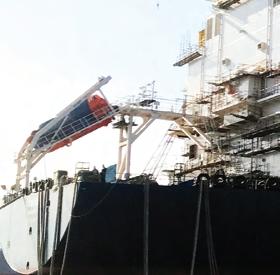

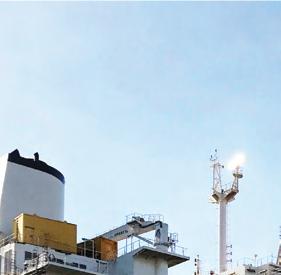
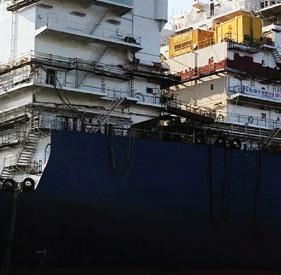

This article was extracted from the one originally published in Riviera on the 21st of Mar 2024.
Our head of LNG-LPG and FSRU Group, Capt Sundeep Dhaliwal explains the pitfalls and challenges of operating a floating storage regasification unit (FSRU) and processes that need to be put in place to ensure safe and efficient operations

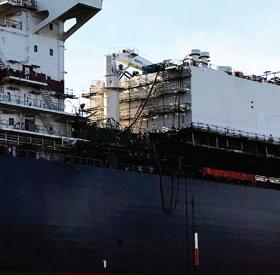
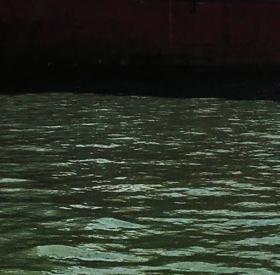

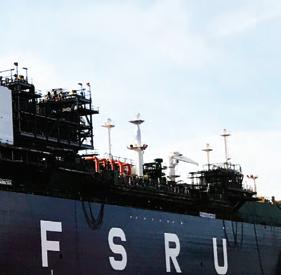


Capt Dhaliwal presented a comprehensive overview of operational processes for FSRUs during a session at the LNG Shipping & Terminals Conference in London in November 2023.
Capt Dhaliwal began by emphasising the critical role FSRUs play in providing flexible LNG import solutions tailored to various environments. With more than 28 years of experience in gas vessel management, Wilhelmsen Ship Management is at the forefront of FSRU operations, managing a fleet that includes eight LNG vessels and several LNG bunker vessels.

FSRU operations present unique challenges compared with traditional LNG vessels. Capt Dhaliwal stressed, “FSRUs must play the partial role of terminal, the power plant infrastructure and the interface of incoming LNG.” He highlighted the significance of regasification, stating, “Regasification is the process of converting liquefied natural gas back into its gaseous form LNG from the ship’s cargo tank is delivered to the feed pumps at a pressure of about 5-6 bars and at -160°C.”
He noted that the natural gas sent out at a temperature of 5°C is designed to be based on the seawater temperature of 14°C. In lower seawater temperature conditions – less than 14°C – the FSRU will use glycol stream water heaters. Due to the current Russia-Ukraine situation, some FSRUs have been to colder regions which have reduced send out rates during the winter months since the vaporisers cannot cope with the low seawater temperatures.
Capt Dhaliwal also referred to LNG rollover, which refers to the rapid release of LNG vapour that can occur because of the spontaneous mixing of layers of different densities of LNG in a storage or cargo tank. FSRU operations are more liable for LNG rollover incidents compared to LNG sea and land-based LNG tanks, which usually facilitate better cargo segregation options. This requires very careful planning, assessment and preventive actions, tailored for optimising safe operations of FSRU use requiring good procedures and competent, experienced and trained personnel.
Continuous operations demand meticulous maintenance planning to ensure uninterrupted send out. Capt Dhaliwal noted, “STS equipment, including hoses, cargo emergency shutdown system, fenders and mooring hooks require regular system health checks, calibrations and timely maintenance.”
Contingency planning and effective communication between FSRU teams and local terminal operators are essential for emergency situations, as demonstrated during Turkey’s earthquake, where Capt Dhaliwal mentioned, “Our managed FSRU was able to establish send-out within hours swiftly for providing continuous power to the region.”
FSRU STS operations bring some unique features. The rigging plan must be established specific to each LNG carrier based on parallel body length, draft and cargo operations. He noted that on quite a few occasions, challenges during STS with LNG vessels have been experienced as LNG carrier crew are not as used to doing an STS operation as the FSRU crew.
One aspect in mooring is that some older LNG carriers in operation have flared shoulders which results in improper deployment of forward spring lines. This must be determined at the assurance stage and protectors on incoming LNG vessels shall be deployed to prevent chafing and damage. Appropriate fender rigging plans should be established specific to each LNG calling at the FSRU and WSM developed a special contraption, a spring line protector, which was made to avoid the spring line and tangling with the railing.
Capt Dhaliwal noted the critical role of seafarer training in FSRU operations. He stated, “It is critical that the subsequent set of seafarers are given equal focus for training and familiarisation.” Challenges arise in finding skilled seafarers due to the limited number of FSRUs globally. Transitioning plans are necessary for deploying local staff, involving extensive training and familiarisation programmes.”
Capt Dhaliwal noted, “The challenge is compounded where FSRU contracts require a transition to employing local staff.”
Transitioning to local staff poses significant challenges, particularly in regions with limited LNG experience. Capt Dhaliwal shared, “A proper well-planned transition plan must be in place for changeover to local staff.”
Wilhelmsen Ship Management’s experience in Turkey exemplifies successful transition planning, where Capt Dhaliwal mentioned, “We eventually had to change the flag to the Turkish flag and employ 100% Turkish workers. Now, they are operating these vessels themselves.”
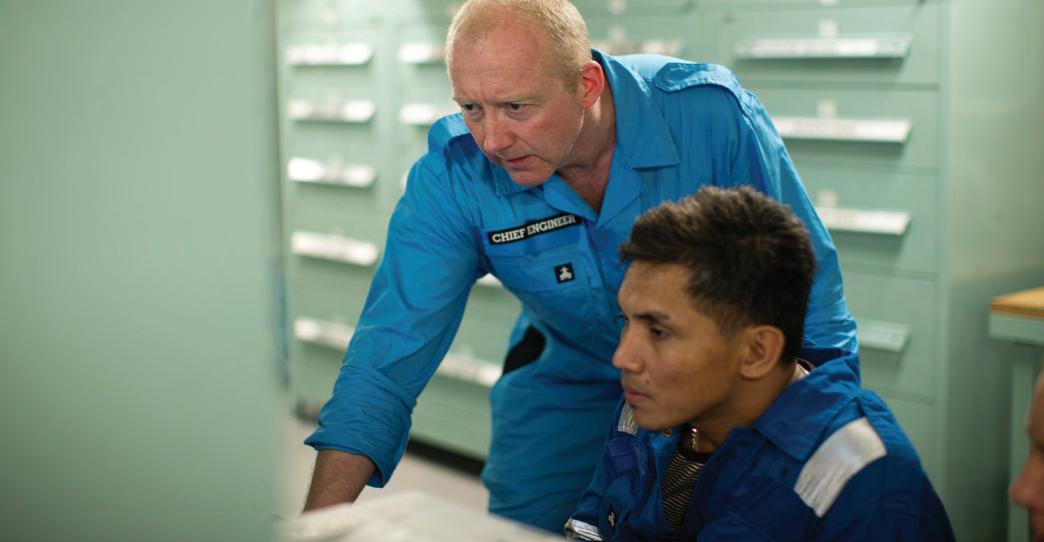
Our data observations demonstrate that officers with longer tenure in the company experience fewer incidents onboard compared to newly recruited experienced officers. Giving the right support to newly recruited experienced officers is paramount to instill the right workplace attitude across the board
You can have the best tools and procedures to ensure safety. But at the end of the day, safety is a personal responsibility. Seafarers’ attitude towards safety is paramount to the safety culture onboard.
Having the right attitude towards safety can contribute positively to the safety culture onboard by helping to ensure that individuals will avoid taking actions that may harm themselves or others. It will also increase the likelihood of one to speak up if an unsafe action is occurring.
It is important to acknowledge that each seafarer is unique, each with different risk-taking behaviors. Recruiting seafarers with the right workplace safety profile is critical to the performance of the team onboard, which determines the vessel’s performance.
Leveraging over 7 years of data points on incidents onboard, we have used the historical data to plot incidents based on generic seafarer profiles. One data point that shows a high correlation to safety is the time of employment the seafarers are employed with the company. Our data observations demonstrate that officers with longer tenure in the company experience fewer incidents onboard compared to newly recruited experienced officers.

There are many factors that could explain this trend. One of them is the effectiveness of our safety culture and training, which has laid a strong foundation for their attitude towards safety. With continuous exposure to our strong safety culture, this has a profound effect on managing their risktaking behaviors. Newly recruited officers have the relevant experience in rank but may lack the relevant exposure to a strong safety culture onboard.
With this information at hand, our focus is intensified towards newly recruited officers. Acknowledging this gap is crucial to ensure that key support personnel like vessel managers, HSEQ, and marine managers provide the right support to our newly recruited officers and ensure they are trained to develop the right workplace attitude.
The crew profile mix onboard also plays a significant role in vessel performance. Leveraging our data, our crew coordination aims to deploy the ideal crew complement that has a strong trend in good safety performance for specific vessel types and ages. One key factor is deploying the ideal ratio of experienced officers in the company to newly recruited officers to achieve the optimum balance in influencing the safety attitude onboard.
As ship managers, we firmly believe that seafarer retention is essential to ensuring a continuous supply of competent seafarers who can operate our vessels safely and in compliance with regulations. This commitment underlines our dedication to upholding the highest standards of safety in ship management.


AttractsandRetainsTopSeafaringTalent
In a world where seafarer shortages are increasing and expected to intensify over the next fi ve years, the tug of war for talent and competence is real. This shortage coupled with the growing complexity of maritime operations, having the correct seafarers onboard is more critical than ever. Safe and compliant marine operations is the cornerstone of success for responsible ship managers. Ship managers who prioritize safety, compliance, and crew welfare not only ensure the smooth operation of vessels but also attract and retain the right seafarers—individuals who are committed, skilled, and dedicated to excellence. In this article, we will explore how responsible ship management practices foster a positive work environment, enhance crew retention, and ultimately elevate the performance and reputation of shippingcompanies.
Safety is paramount in the maritime industry, and responsible ship managers prioritize the well-being of their crew above all else. By implementing robust safety protocols, conducting regular drills and training sessions, and adhering to international safety standards, ship managers instill confidence in their crew members and create a culture of safety consciousness onboard. Seafarers are more likely to choose employers who prioritize their safety and well-being, knowing that their lives and livelihoods are valued.
Responsible ship managers operate with integrity and uphold the highest standards of compliance with regulatory requirements, industry best practices, and ethical principles. By maintaining transparent communication, ensuring regulatory compliance, and fostering a culture of integrity, ship managers earn the trust and respect of their crew members. Seafarers are attracted to employers who demonstrate ethical leadership and a commitment to operating with integrity, knowing that they are part of an organization that values honesty, fairness, and accountability.
Crew welfare is a fundamental aspect of responsible ship management, and ship managers invest in programs and initiatives that prioritize the physical, mental, and emotional wellbeing of their crew members. From providing access to quality healthcare, internet accessibility and recreational facilities to offering support services for mental health and wellness, responsible ship managers demonstrate their commitment to caring for their most valuable asset – their people. Seafarers are more likely to choose employers who prioritize crew welfare and provide a supportive work environment where their needs are met, and their voices are heard.
Responsible ship managers recognize the importance of investing in the professional development and career advancement of their crew members. By offering training programs, career development opportunities, and pathways for advancement onshore, ship managers empower their crew members to reach their full potential and achieve their career goals. Seafarers are attracted to employers who invest in their growth and development, knowing that they have the opportunity to learn, grow, and advance their careers within the organization.

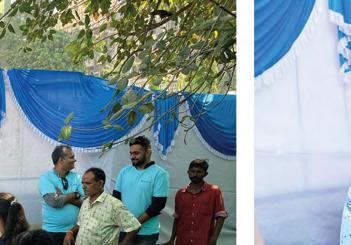


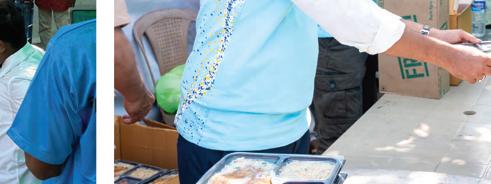


Responsible ship managers also recognize the importance of integrating with local communities through social works. By actively engaging in philanthropic initiatives, community outreach programs, and social responsibility projects, ship managers demonstrate their commitment to making a positive impact beyond the maritime industry. These efforts not only contribute to the well-being of local communities but also foster goodwill and strengthen relationships with stakeholders ashore. By actively participating in social works and giving back to the communities they operate in, responsible ship managers create a positive image of their organizations as responsible corporate citizens, further enhancing their reputation and appeal to both current and prospective seafarers.
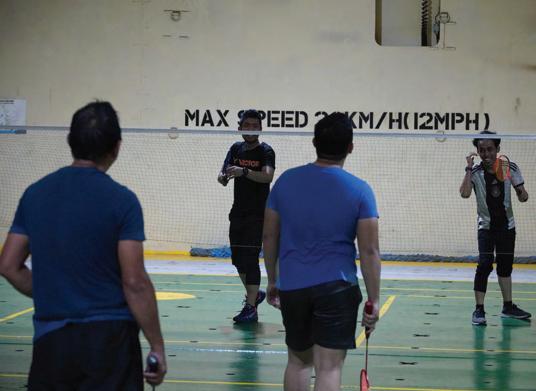
In an era of increasing environmental awareness and sustainability concerns, responsible ship managers prioritize environmental stewardship and sustainability initiatives. By implementing eco-friendly practices, reducing carbon emissions, and adopting green technologies, ship managers demonstrate their commitment to protecting the environment and mitigating the impact of shipping operations on the planet. Seafarers are more likely to choose employers who are environmentally responsible and demonstrate a commitment to sustainability, knowing that they are part of an organization that values environmental stewardship and sustainability.
Responsible ship management practices are essential for attracting and retaining the right seafarers who are skilled, committed, and dedicated to excellence. By prioritizing safety, compliance, crew welfare, career development, and environmental stewardship, ship managers create a positive work environment where seafarers feel valued, respected, and empowered. As responsible ship managers continue to lead by example, they set the standard for excellence in the maritime industry and inspire others to follow suit, driving positive change and shaping the future of shipping for generations to come.
Ove Myrstad started his career in Wilhelmsen, following in his father’s footsteps. They share a seafaring bond that will be cherished for a lifetime. We explore his journey starting from his father’s seafaring career, his own career as well as share his experiences along the way.
You know you’re in the right place when you see employees and their children working at the same company.
This is especially true for our Vessel Manager, Ove Myrstad. Ove’s Father sailed with Wilhelmsen for years and even met his wife onboard a Wilhelmsen vessel, whom Ove claimed was a self-made sailor in her own right. Following in his father’s footsteps, Ove sailed for many years himself, and became a Captain in the process. Nowadays, he settles down in Oslo, Norway with his wife and two children. We spoke to Ove, and he shared his life story and experiences.
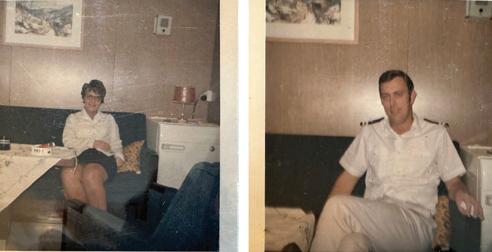


An interesting coincidence that Ove shared is that his father’s first vessel as an officer is the Taronga (II) while Ove’s first vessel as a 3rd Officer was the Taronga (IV). Both Ove and his father first sailed as officers on the Taronga Ships. He was happy to have this shared connection with his father.



Ove’s Father and friends while sailing onboard - happy days!

Ove’s father started sailing with Wilhelmsen in 1955 when he was approximately 16 years old, working as a Messman. After serving a mandatory military service and becoming a Radio Officer through the Navy, he eventually met his wife (Ove’s mother) onboard the vessel, Trinidad in the early 1970’s. She was a messgirl while he was a Radio Officer. She worked in Wilhelmsen until they got married and settled down. They got married in New York, USA while they were sailing together. He eventually transitioned onshore and worked on an oil platform owned by Wilhelmsen in the early 80’s to be closer to his family.


Ove’s Father, Jan Elias Myrstad and Grandparents accompanying him on his first voyage.
Ove’s father was a significant influence on his decision to become a seafarer himself. As a child, he was always exposed to the seafaring life. He once visited his father on a vessel as a baby with his mother. Later as a young boy, he visited as his father on an oil rig while at a repair yard. He grew up as a child with maritime memorabilia and pictures all around his house. He was also a restless child with a lot of energy, always running around everywhere and exploring different places around his neighbourhood. When Ove expressed interest in becoming a seafarer, his father was not pleased with this initially and wanted him to choose a safer career choice instead. Eventually, he changed his mind and became proud of Ove once he started to obtain his first few stripes and saw how passionate he was about seafaring.
Ove started his seafaring career as a Cadet in 1998 on the vessel Tapiola. He has travelled to many countries all around the world since then. He especially enjoyed visiting Australia and New Zealand as destinations after long voyages around the world. He also enjoyed going through the Panama Canal and exiting on the other side to beautiful blue skies and the vast open ocean. He likes the feeling of adventure and purpose that sailing gives him.
After a long career at Wilhelmsen, spanning from Cadet to Chief Officer to Captain and even becoming a Port Captain, Training Manager, and the Head of Cargo Quality and Service Operations for another company, Ove returned home to Wilhelmsen as a Vessel Manager. He likes to visit the vessels and meet the people he has worked with before. Since settling down in Oslo, Norway, with his family and becoming a Vessel Manager, he misses seafaring, experiencing the open skies, and adventuring. The feeling of looking out the window and knowing that you are somewhere different every single day gave him a sense of purpose. However, being a Vessel Manager is also very satisfying as he gets to put his years of seafaring experience to good use and even visit the vessels and sail for shorter periods.
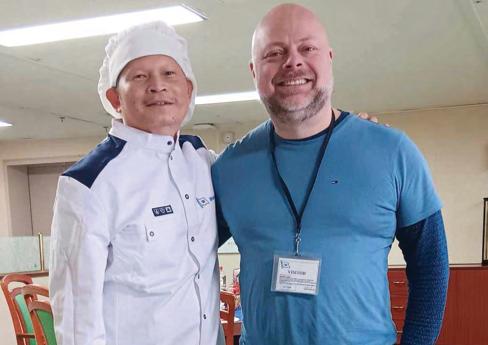



Ove has a wife and two children, a daughter and a son. His daughter is now 14, and his son is 6. He has not taken them on a voyage with him yet, but his daughter visited him once onboard in Santos, Brazil, as a young girl. He would support them if they wanted to become seafarers, but he also acknowledges the challenges and sacrifices of the profession.
Ove has sailed on many different vessels and in various roles, and he loves the camaraderie onboard. Among the many people he has met in his career, Gerry, the Chief Cook, shared a special bond that developed into a friendship. Besides Gerry’s exceptional cooking skills and cheerful personality, Ove relates the connection he has with his father to Gerry, as Gerry’s son currently works at Wilhelmsen as a Trainee Engineer.
Ove first met Gerry in 2007 when he was the Chief Officer on the Tortugas. Gerry had an easy-going personality that made him fun to be around. They also bonded over rock music. Ove fondly remembers Gerry’s Saturday Special, where he made Shrimp Salad with Steak for dinner. For over three decades, they have been meeting onboard Wilhelmsen vessels as Ove transitioned in his career. The most recent reunion was just last year on the Toronto, where Ove was the Vessel Manager.
Ove offers this advice for new seafarers or those interested in pursuing a career at sea:
If you have an interest and passion for seafaring, go for it. The industry is constantly changing and evolving, so it’s important to approach it with an open mind. At sea, you can’t postpone tasks because everything needs to run like clockwork. Missing one task could start a chain reaction that affects the entire operation. Seafarers need dedication and the ability to adapt to a schedule that keeps them away from friends and family for long periods of time.
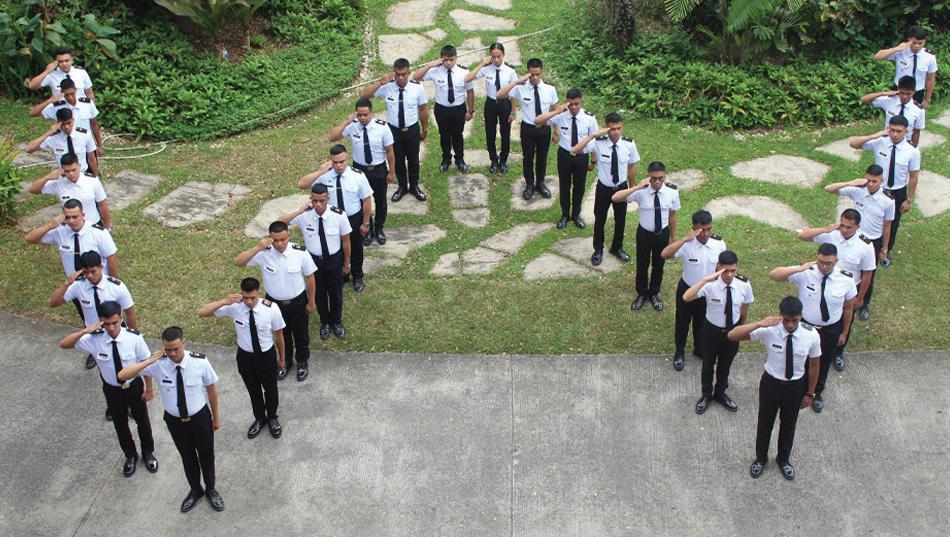
Welcoming 24 talented cadets from our partnership program with Lyceum of the PhilippinesUniversitytoourCadetProgram
We’vesuccessfullyselected24cadetsfortheinauguralclass of our cadet program with Lyceum Philippines University Batangas (LPU-B). Wilhelmsen ShipManagement has entered into a partnership program with LPU-B in December 2023 to source for talents to join our cadet program.
These top performers navigated a rigorous selection process, including screenings, exams, and interviews. They’ll now embark on a comprehensive training journey, gaining valuable hands-on experience aboard our diverse fl eet of vessels, including LNG & LPG carriers, container ships, bulk carriers, and more. By graduation, they’ll be well-equipped with the knowledge and skills to excel as Third Offi cers or FourthEngineersin themaritimeindustry.
This is just the beginning! We’re currently selecting the next batch of talented cadets to join our program. Mark your calendars – our fi rst Cadet Conference is happening in October,sostaytunedformoreupdates!

We welcome our first batch of cadets, here’s wishing them smooth sailing towards a bright future!
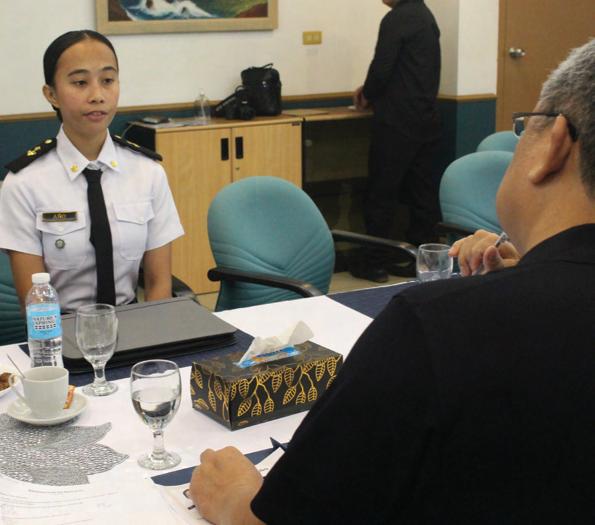

The cadets undergo a rigorous selection process to identify the best future maritime leaders

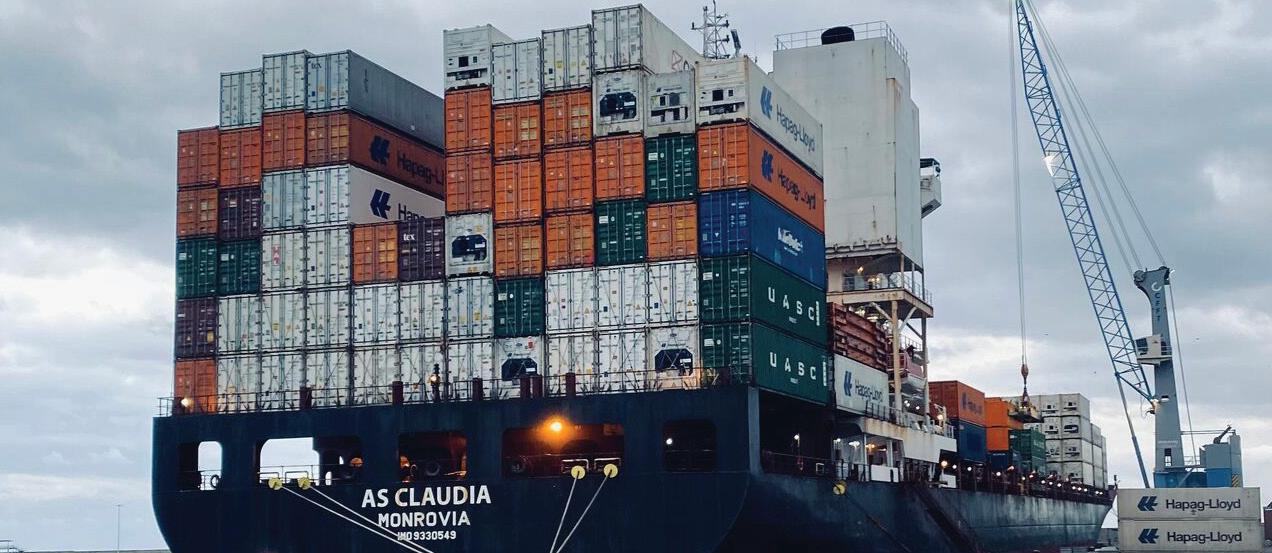
Wilhelmsen Ahrenkiel participates in a yearly trainee program that offers apprenticeship opportunities to high school graduates. In Germany, students have the option to attend university or do an apprenticeship with companies to finish their vocational education after high school.
The program has been very effective in creating a strong pool of young talents who join the company as full-time employees after graduation. The 3-year apprenticeship program gives a good insight to the trainees in all aspects of shipping. The journey starts with exposure to the technical department where trainees will work with the Vessel Managers and Technical Assistants and learn about the tasks and routines of technical management. The trainees will be rotated within different departments including crewing, HSEQ, performance department and insurance.
In addition to ship management, the trainees will also learn about the commercial side of shipping when they move on to Harper Petersen, the commercial manager of our fleet. Trainees will experience shipbroking and commercial chartering services of container vessels.
Trainees also get the chance to join a vessel and see what life at sea is like. Our trainee Mika Lasogga left his office
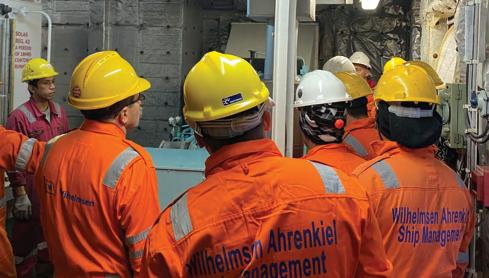

Thanks to Captain Plamen Petkov and the entire crew of AS Claudia for providing our office staff with this valuable shipping experience.

desk to learn about the life of a seafarer on AS Claudia in the Mediterranean. “This firsthand experience has made me appreciate even more the constant hard work and commitment that seafarers show every day,” says Mika Lasogga. Being onboard helps the trainee to comprehend how the onboard processes operate, which gives them more insight into the work they do in the office.
At the end of the apprenticeship program, trainee graduates from the program. We applaud Laura Paschburg who successfully navigated through her apprenticeship as a shipping clerk with Harper Petersen & Co., MPC Capital AG and Wilhelmsen Ahrenkiel Ship Management. As the best graduate in the tramp shipping sector, Laura passed her exams with flying colors and was honored by the Deutscher Nautischer Verein von 1868 e. V. We are thrilled to continue to accompany Laura on her future professional journey and are happy that she joins our HSEQ department in March 2024!
We extend our heartfelt thanks to every member of the Wilhelmsen Ahrenkiel team for their invaluable mentorship and guidance, playing a pivotal role in guiding young talents towards a flourishing future in the shipping industry. Let’s maintain this momentum and continue nurturing more young professionals in our field.


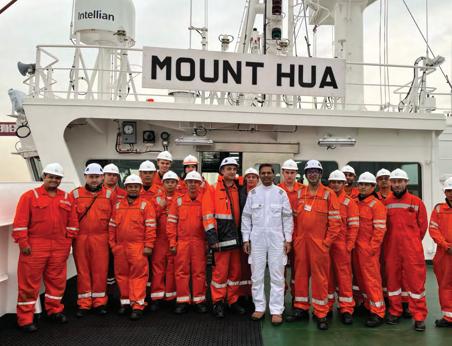


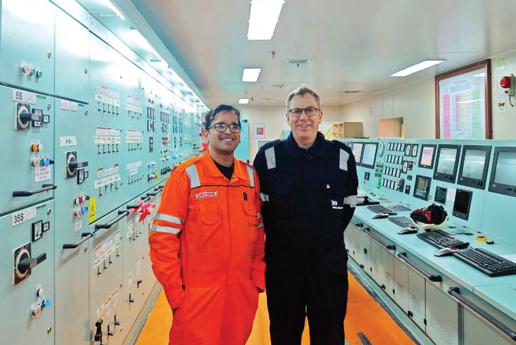

Our COO, Hakon Lenz and team, recently attended the naming ceremony of Mount Hua and shared quality moments with our crew during the takeover process. We are grateful
to the owner, Himalaya Shipping for their continuous trust in us. Capt. Voinea George is in command with Chief Engineer Shyam Prakash Upadhyay.

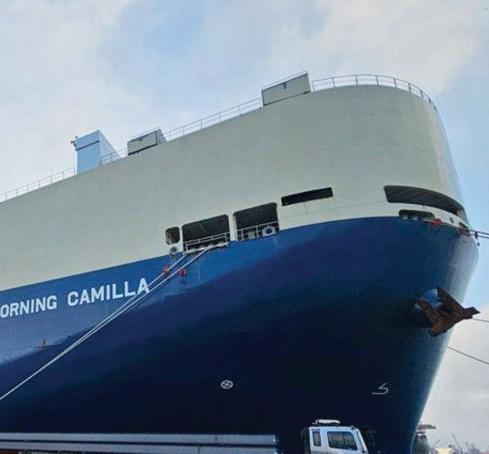
We are grateful to the owner, Eukor Car Carriers Inc., for entrusting us with the management of this vessel. Captain Song Eui is in command with Chief Engineer Kim Jae-Ki.
We welcome the Morning

to our family
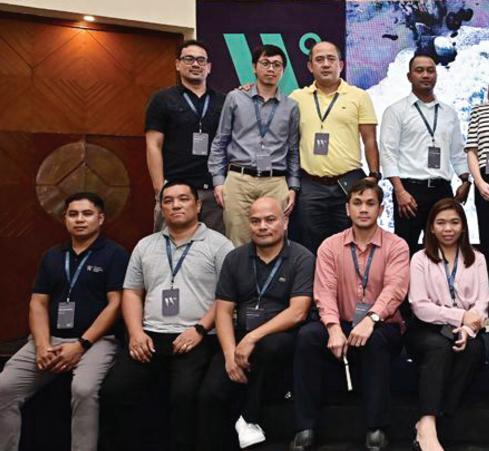
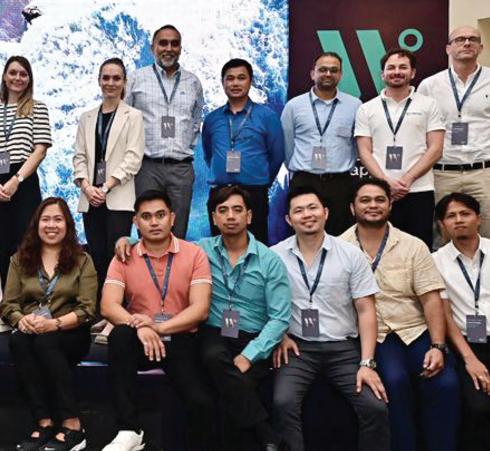


Bi-annual Officer’s Conference in Goa, India with Wallenius Wilhelmsen and Wallenius Marine AB. We hosted a bi-annual Officer’s Conference in Goa, India, in collaboration with Wallenius Wilhelmsen and Wallenius Marine AB. The conference gathered 80 officers under the theme ‘Make it Happen.’ The conference focused on the fundamental aspects of People, Safety, Technology, and Sustainability, reflecting the dedication and passion of seafarers in the maritime industry.
The first day of the conference concentrated on Safety and People, highlighting safety statistics, compliance leadership, and encouraging reflections among participants. The second day transitioned to explore Technology and Sustainability, covering topics like compliance regulations (CII, EU-ETS, S-Log), software advancements (Tekomar, Pythia), and
environmental initiatives (ESG). These discussions not only explored technologies but also emphasized the crucial link between sustainability and seafarer welfare. The agenda also included networking opportunities and team-building activities, fostering collaboration among officers.
The Officers Conference in Goa was a success, showcasing the team spirit of seafarers in the maritime industry. This conference emphasized our ongoing dedication to improving systems and safety measures, driving progress through our commitment to ‘People, Safety, Technology, and Sustainability,’ driving progress in the ever-evolving world of maritime operations.

Officers strengthened bonds with team-building activities and shared joy on the dance floor.




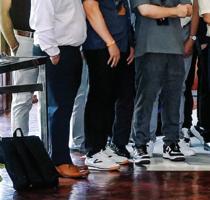

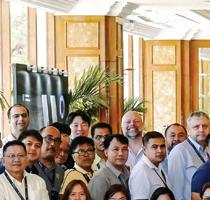



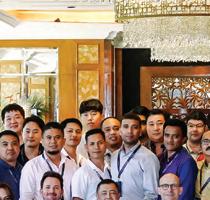


Our COO, Hakon Lenz recently attended our Officer Conference in Cebu, where he had the opportunity to engage directly with our seafarers. This conference served as an invaluable platform for sharing insights, discussing industry trends, and addressing the challenges and opportunities we

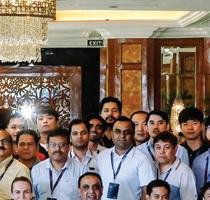
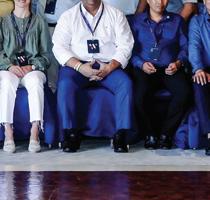
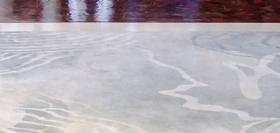
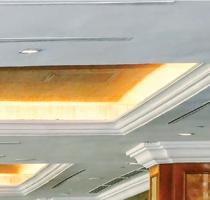

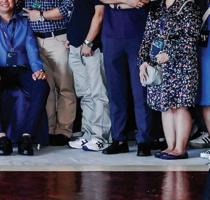
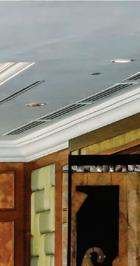
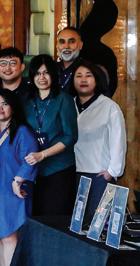
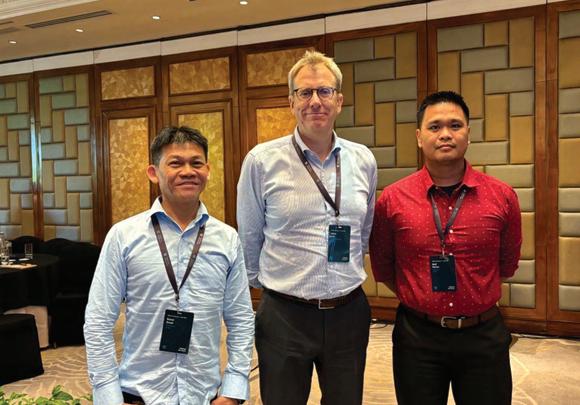


The team had a very productive conference


face in the maritime sector. The event was a great success in fostering a sense of camaraderie and unity among our team. It underscored our commitment to open communication, professional development, and maintaining the highest standards of ship management.


The event was a great success in fostering unity among our team
eption for all invited guests of Silk Alliance. The cocktail reception is co-hosted with Lloyd’s Register. We welcomed a diverse array of guests, including government dignitaries from New Zealand, Australia, England, and Singapore, as well as UN Climate

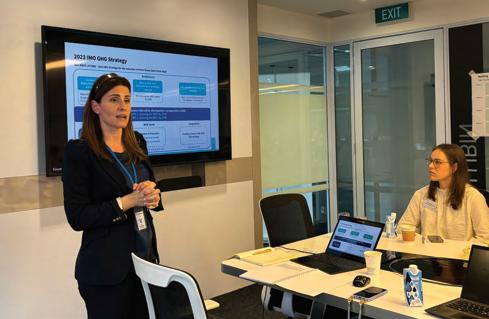
Workshop where industry leaders shared insights, shaping a sustainable maritime future together!
During this year’s Singapore Maritime Week, we hosted the activities of Silk Alliance, a green corridor cluster in Asia with 337 ships striving for emissions reduction, backed by local governments and stakeholders. This Green Corridor Cluster initiative is established by the Lloyd’s Register Maritime Decarbonisation Hub.
We have been a member of Silk Alliance since 2022 and together with other members, we have contributed our expertise in the development of a fleet-specific fuel transition






























We ended the week with a cocktail reception for all invited guests of Silk Alliance. The cocktail reception is co-hosted with Lloyd’s Register. We welcomed a diverse array of guests, including government dignitaries from New Zealand, Australia, England, and Singapore, as well as UN Climate Change High-Level Champions.
Our cocktail reception hosted 175 guests. The fantastic location and the desire to quench the thirst on a hot day in Singapore were not the only reasons why 175 guests attended the reception. The strong show of support was bolstered not just by camaraderie but also by a shared commitment to advancing the net-zero agenda in shipping. We hope this gathering provided a good platform for collaboration, further propelling efforts towards a sustainable future for the maritime industry.


strategy for container ships operating in Singapore and wider Asia.
This year, we were chosen to host the 6th workshop held in Pandan Loop, Singapore. The workshop was fruitful, particularly when we engaged with subject matter experts from financial institutions on their perspective for green transition and also gained insights into future governmentdriven projects that aim to support the fuel transition period.






Our cocktail reception hosted 175 guests. The fantastic location and the desire to quench the thirst on a hot day in Singapore were not the only reasons why 175 guests attended the reception. The strong show of support was bolstered not just by camaraderie but also by a shared commitment to advancing the net-zero agenda in shipping. We hope this gathering provided a good platform for collaboration, further propelling efforts towards a sustainable future for the maritime industry.
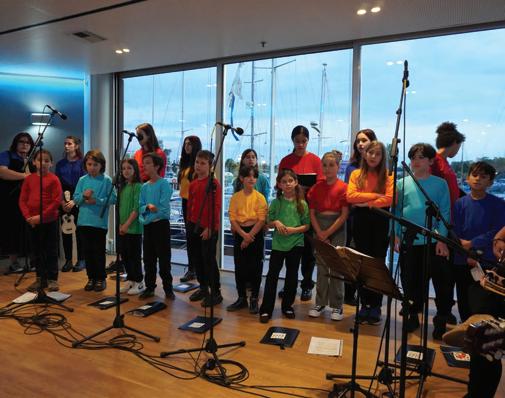



We have hosted a cocktail reception to meet and greet our friends and partners in the Greek shipping community. The evening was filled with engaging conversations, shared insights, and the strengthening of valuable relationships. Adding a unique touch to the event, we invited Polyphonica, a nonprofit organisation abc
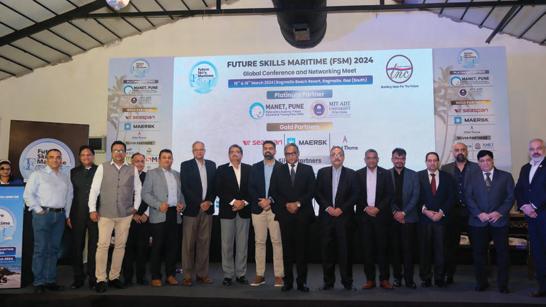




Ship Management India wins “Best Recruiting Associate Sagar Ratna Award 2024” at the Future Skills Maritime Event
Capt. Chinna Ruparaju, General Manager of Ship Management Competence Development & Training, and Capt. Kunal Katyal, Global Head of Marine Personnel, recently participated in the Future Skills Maritime (FSM) event held in Goa, India. During the event, they were honored with special honours, including the prestigious “Best Recruiting Associate Sagar Ratna Award for 2024”.
Future Skills Maritime (FSM) is an annual event which enables exciting discussions on a wide range of issues concerning modern day seafarers including recruitment, manning,
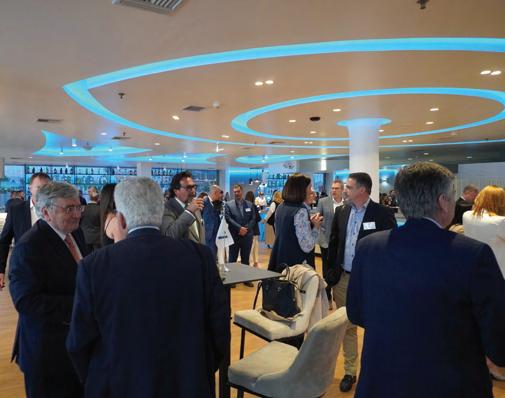



that Wilhelmsen supports, to provide children and youths from underprivileged backgrounds the opportunity to learn and develop music and fine arts. These talented young performers delivered a spectacular musical performance that added an additional layer of warmth and joy to the reception.
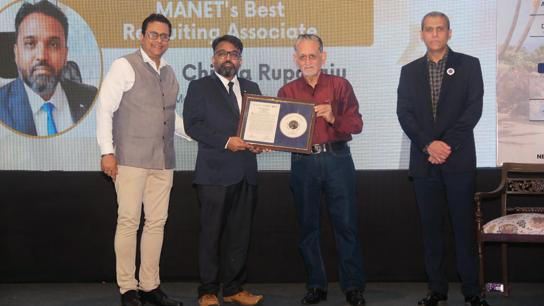












training, etc. The event had healthy representation from the local government as well as an exchange of ideas between the regulators and the industry.
Active participation from leading stakeholders from the maritime industry in India and Wilhelmsen Ship Management (India)’s unique reputation as a forward-looking employer with focus on equal opportunities for all and technology enabled training philosophy allowed us to gain recognition for our value system while making active contributions of our own.


Smiles and laughter lit up the celebration, we hoped to foster lasting happiness and cherished memories for all.
Eid Celebration with Rumah Kasih Harmoni Orphanage in Malaysia
During Ramadan, we supported a children’s welfare home in Sungai Buloh, Malaysia, which shelters 128 underprivileged children. Our team organized a special shopping trip for the children to select new outfits for the Eid Celebration, symbolizing a fresh start. This effort deepened our commitment to the local communities.
In addition, our team led a food donation drive to collect essential groceries and provisions for the home. Thanks to the generous contributions of our employees, we were able to gather an abundance of supplies and deliver them directly to the home’s doorstep.
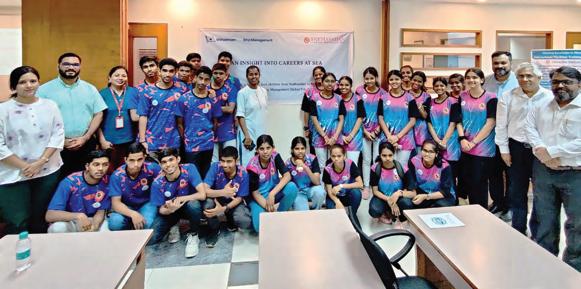

We hope the children were inspired to explore their interests and consider a career at sea.


Home in International Maritime Training Centre (IMTC) in Mumbai India
16 girls and 11 boys (teenagers) were invited to our in-house training center, International Maritime Training Centre (IMTC) to get a glimpse of maritime training and life at sea.
The session began with a welcome from Mr. Jaime Pereira, Head of Financial & Shared Services India, who encouraged children to learn about a career at sea. Capt. Chinna Ruparaju, General Manager of IMTC, handed out Wilhelmsen badges to the children, making them Prospective Cadets. The interactive discussion highlighted the maritime industry’s


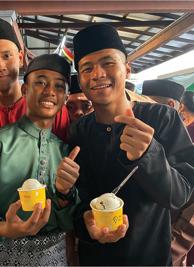
After Eid, a celebration was hosted at the home, attended by employees and senior management. The event featured children performing traditional Malay martial arts and acoustic music to welcome guests, and employees showcasing their talents with a performance. Additionally, a project to upgrade the welfare home’s facilities was announced, aiming to create a more vibrant and conducive living environment for the children, ensuring comfortable and stimulating spaces for learning and growth.
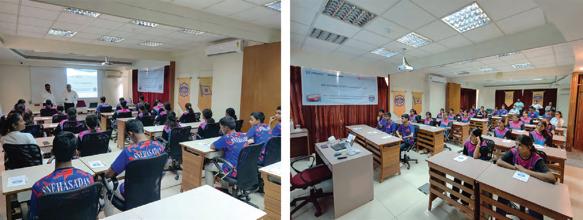
role in global trade and introduced the children to various onboard ranks and responsibilities, including navigation, maintenance, and safety. They also experienced steering a ship using a simulator and learned about the engineers’ roles in ship maintenance and technological advancements. The session emphasized passion, perseverance, and continuous learning for a maritime career. It concluded with the children receiving goodie bags and enjoying a meal, leaving them inspired and empowered to explore a potential future at sea.
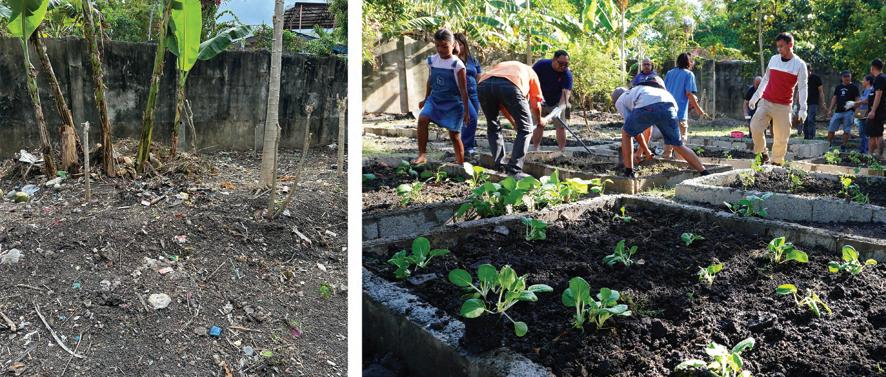

In partnership with our key customer, Golden Ocean, we transformed a neglected plot of land at Our Lady of Divine Providence Home into a thriving community vegetable garden.
This home shelters 25 young girls facing malnutrition, poverty, and danger. The project aimed to provide a sustainable food source and a learning space for the children. With financial support from Golden Ocean and the dedicated efforts of our seafarers, we cleared the land and planted six types of vegetables.
Training was provided to ensure proper maintenance of the garden. This initiative has fostered collaboration between our customers, seafarers, and the community, promising ongoing support and improvements for the home.
A huge thank you to all seafarers who generously volunteered their time and efforts for this project. Your support has truly left a lasting impact.
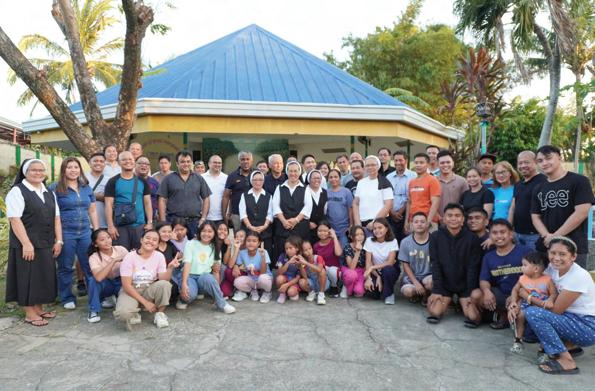









Choose a sunny location for planting tomatoes, as they require at least 6-8 hours of direct sunlight per day. Ensure that the soil is well-drained, fertile, and rich in organic matter.
Plant tomato seedlings or transplants in prepared soil after the last frost date. If starting from seeds, sow them indoors 6-8 weeks before the last frost date and transplant seedlings outdoors once they have grown to a suitable size. Space tomato plants 18-24 inches apart in rows spaced 24-36 inches apart.
Water tomato plants consistently to keep the soil evenly moist but not waterlogged. Tomatoes require regular watering, especially during dry periods. Avoid overhead watering, as it can promote the spread of diseases. Water the base of the plants to keep the foliage dry.
Fertilize tomato plants regularly with a balanced fertilizer or organic compost to promote healthy growth and fruit development. Apply fertilizer according to the manufacturer’s instructions or based on soil test recommendations.

Tomatoes require a sunny location with well-drained and fertile soil

We revisited the garden after a month and are delighted to see our plants thriving, especially the tomatoes. We’d like to share our step-by-step guide for planting flourishing tomatoes below:
Provide support for tomato plants by installing stakes, cages, or trellises to prevent them from sprawling on the ground. This helps improve air circulation around the plants, reduces the risk of disease, and makes harvesting easier.
Prune tomato plants regularly to remove suckers (side shoots) that form in the crotches between the main stem and branches. This encourages the plant to put more energy into fruit production and improves air circulation, which helps prevent diseases.
Monitor tomato plants regularly for signs of pests, such as aphids, whiteflies, and tomato hornworms, as well as common diseases like early blight, late blight, and powdery mildew. Use organic pest control methods, such as neem oil or insecticidal soap, to manage pest infestations. Practice crop rotation and good sanitation practices to prevent the spread of diseases.
Harvest tomatoes when they are fully ripe and have developed their characteristic color, whether it’s red, yellow, orange, or purple, depending on the variety. Gently twist or cut the fruit from the stem using sharp scissors or pruning shears to avoid damaging the plant.

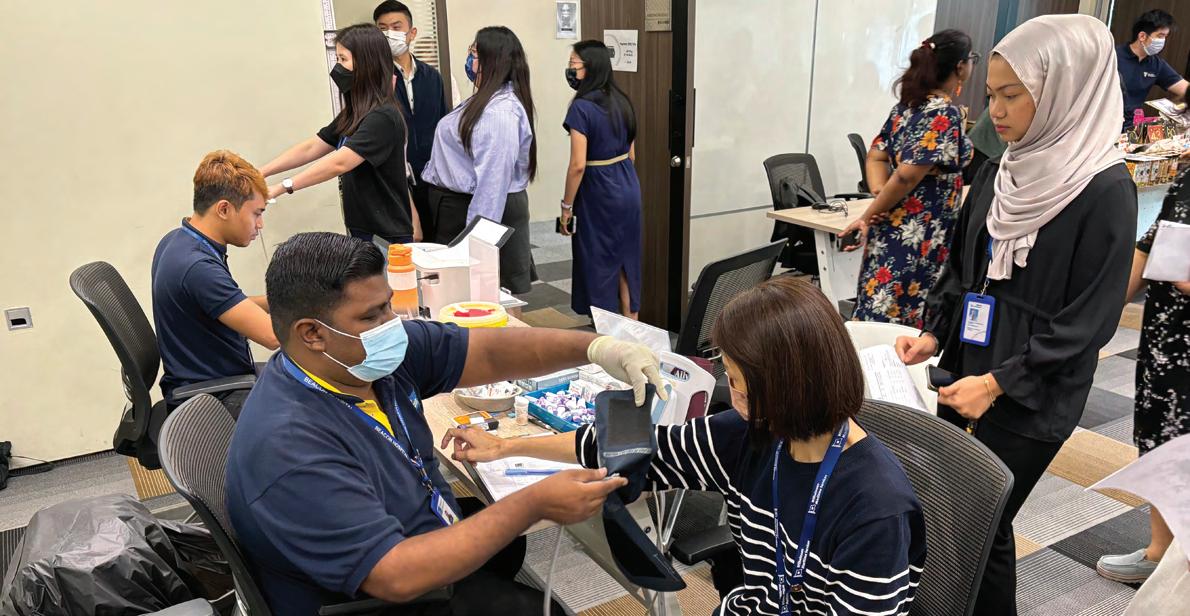
Health Roadshow in KL Office with Beacon Hospital
We recently organized a Health Roadshow in Kuala Lumpur, led by the People Builder’s team to raise awareness about heart disease and healthy diets through supplements. Our employees participated in body composition analysis, BMI checks, blood pressure readings, glucose tests, and cholesterol checks. Beacon Hospital’s customer service officers provided consultations and offered expanded

Employees received a free health test and consultation
health test packages. Dr. Tivya, a Health Screening Medical Officer from Beacon Hospital, gave a free online health talk on reducing heart disease risk, which sparked a lively discussion. Employees also enjoyed discounts on health products. The event was well-received, helping participants better understand and find ways to improve their health.
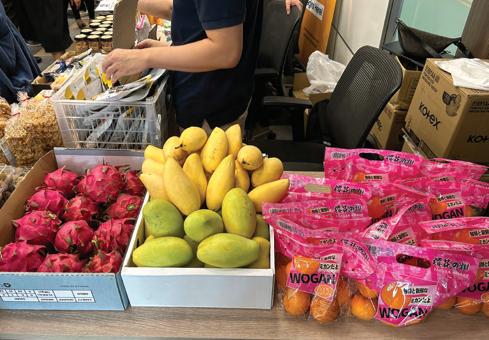
We enjoyed discounts on health products and fresh produce

Malaysia
Wilhelmsen Ship Management
Malaysia 19th Floor, 1 Sentral Jalan Rakyat, Kuala Lumpur Sentral 50470 Kuala Lumpur
Malaysia
T +60 3 2708 1800
Norway
Wilhelmsen Ship Management Norway AS Strandveien 20 PO Box 33, NO-1324 Lysaker
Norway
T +47 67 58 47 00
Singapore (Head Office)
Wilhelmsen Ship Management
Singapore 1 Kim Seng Promenade #15-07 Great World City West Tower Singapore 237994
T +65 6513 4670
United States of America
Wilhelmsen Ship Management USA
9400 New Century Drive Pasadena, Texas 77507 USA
T +1 281-816-9817
South Korea
Wilhelmsen Ship Management South Korea 10F, Marine Center Building 52 Chungjangdaero, 9 Beongil (Jungang-Dong 4 Ga) Jung-Gu Busan, Republic of Korea 48936
T +82 51 711 0711
Netherlands
Wilhelmsen Ahrenkiel Ship Management B.V. Oever 5 3161 GR Rhoon
Netherlands
T +31 10 669 0241
Disclaimer: While care has been taken to ensure the information in this publication is accurate, this is a general guide and not intended to be relied on for any specific purpose. Wilhelmsen Ship Management Holding Limited and its subsidiaries cannot be held responsible for any errors or consequences arising therefrom. If you would like to reproduce any part of this publication, please seek our prior approval.
Greece
Diana Wilhelmsen Management Limited 350 Syngrou Avenue Syngrou Tower – 7th Floor 176 74 Kallithea Athens, Greece
T +30 21 4406 6710 Germany
Wilhelmsen Ahrenkiel Ship Management GmbH & Co. KG Palmaille 67 22767 Hamburg Germany
T +49 40 743 290 600